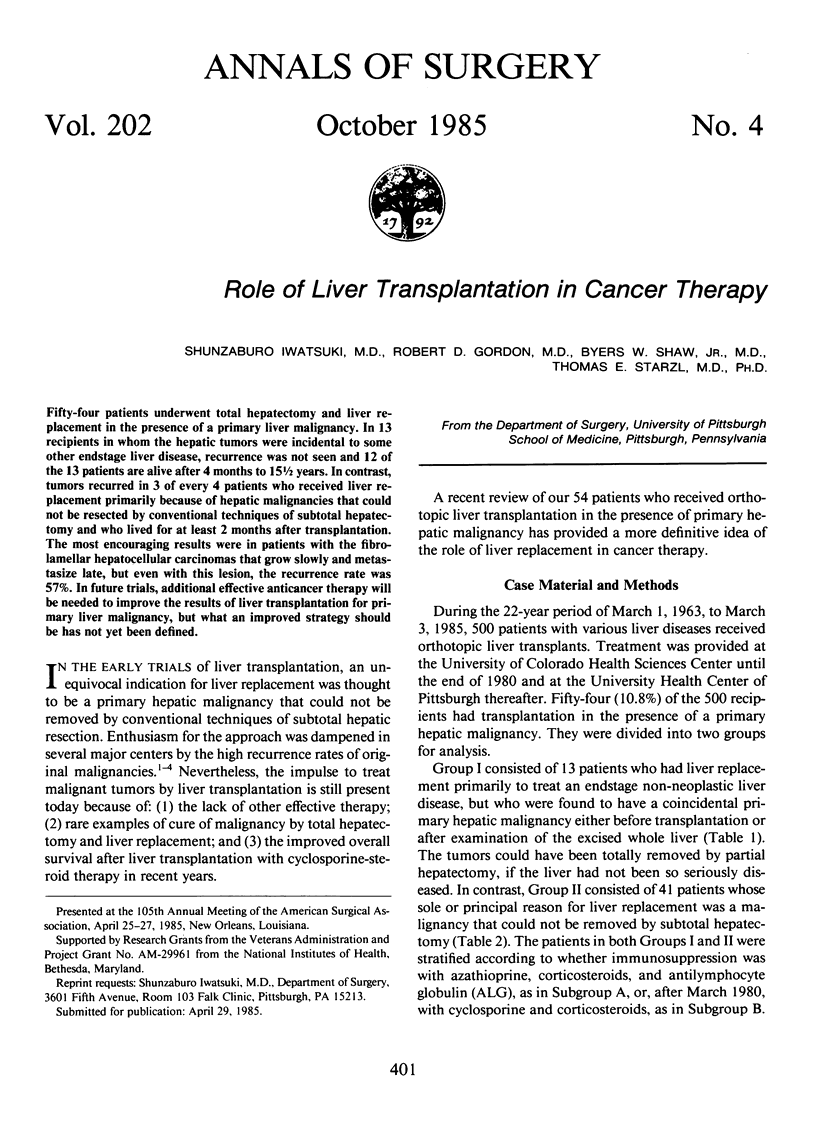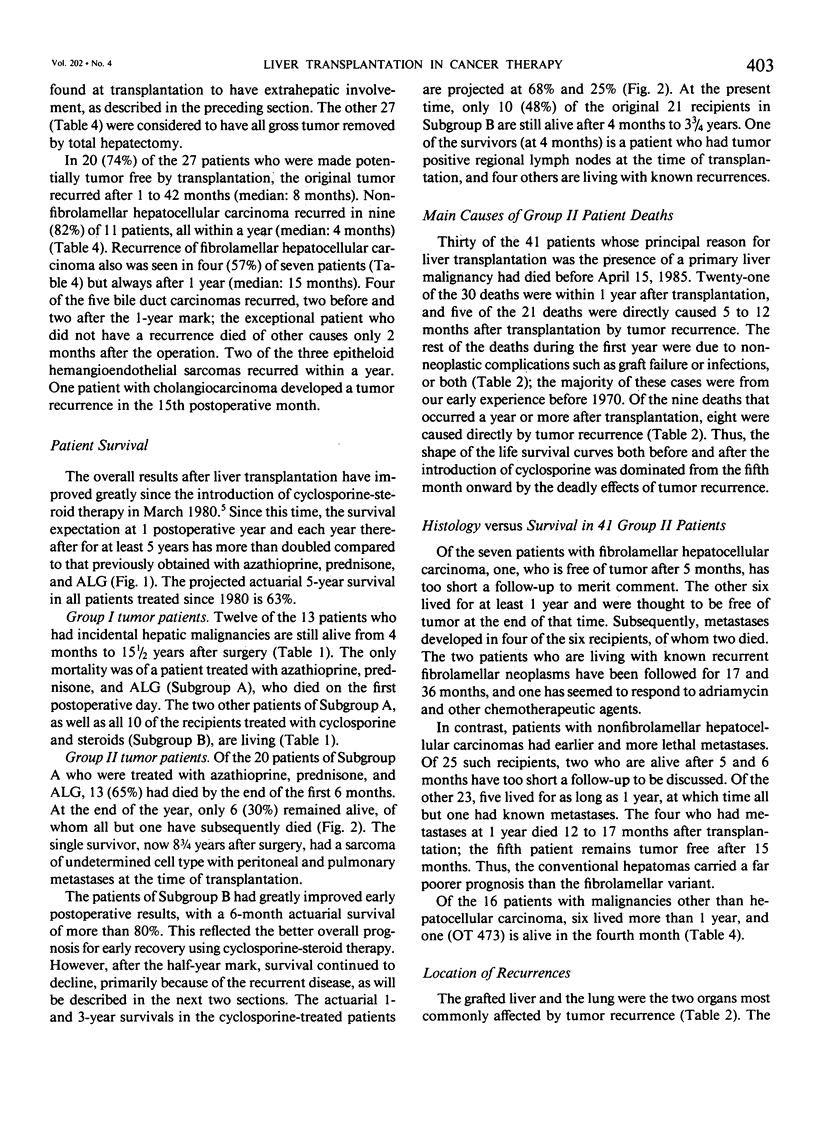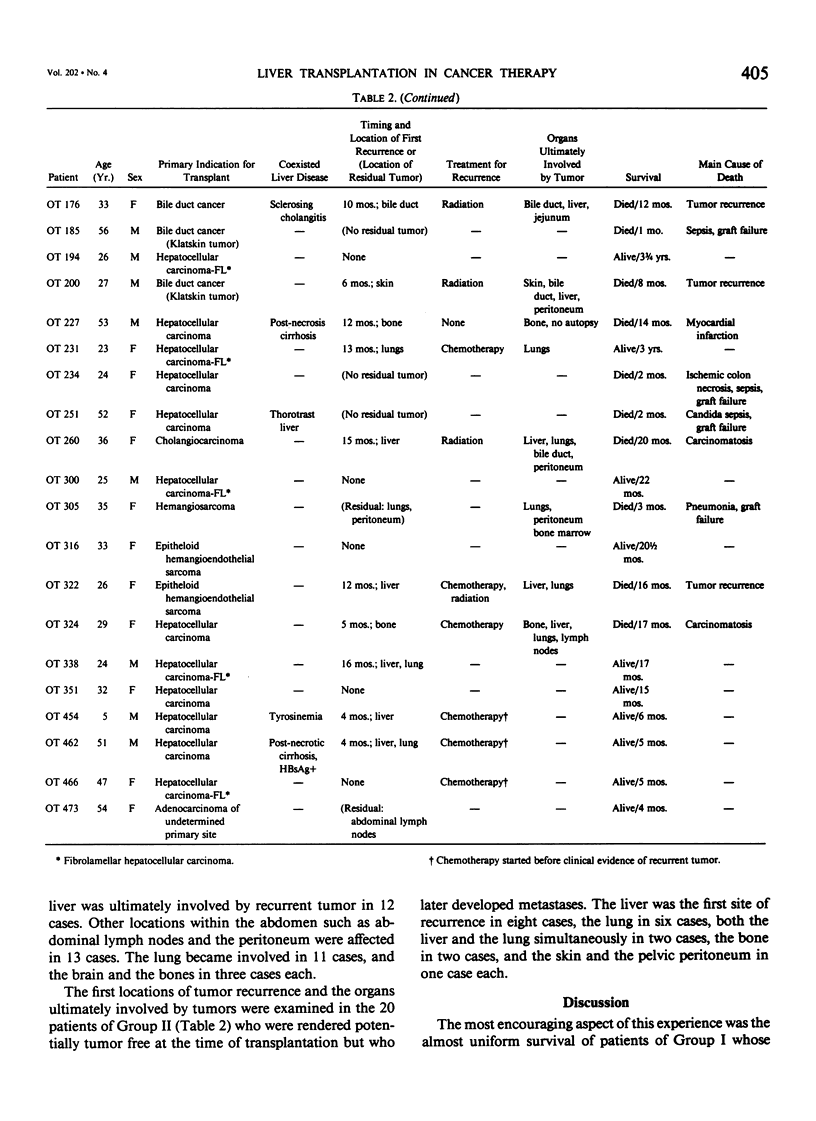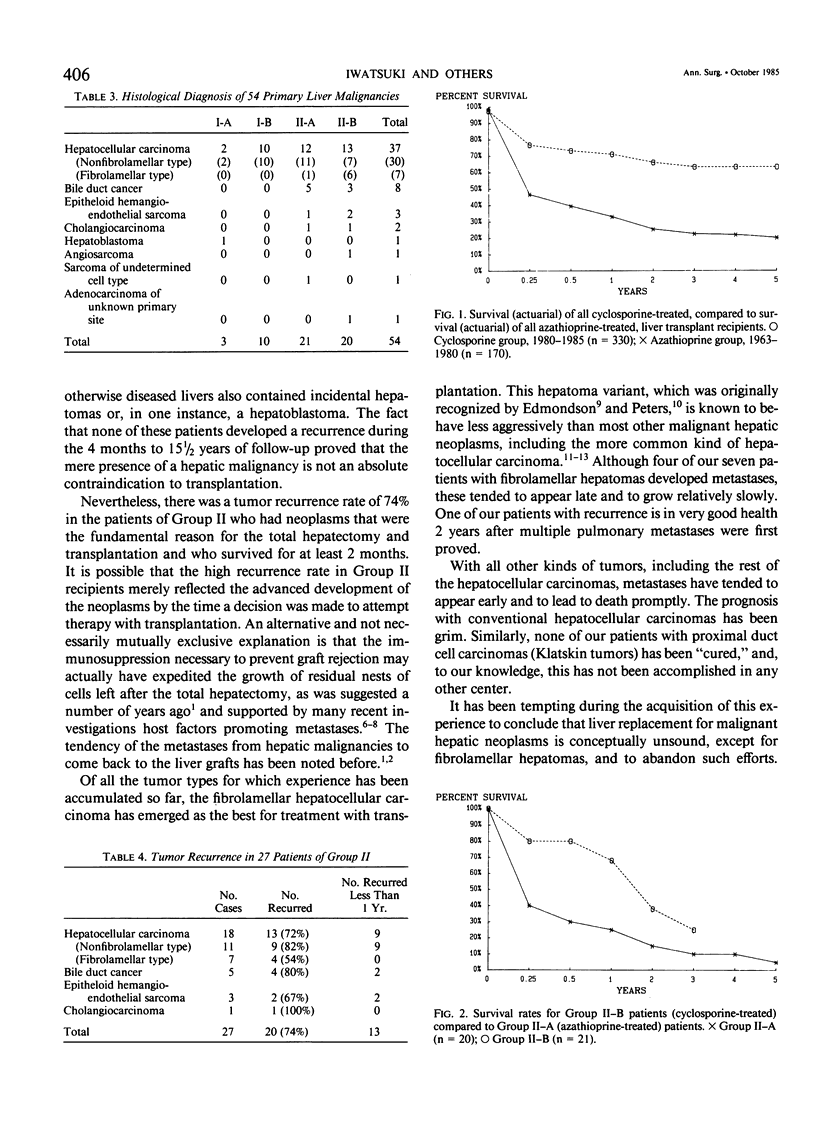Abstract
Fifty-four patients underwent total hepatectomy and liver replacement in the presence of a primary liver malignancy. In 13 recipients in whom the hepatic tumors were incidental to some other endstage liver disease, recurrence was not seen and 12 of the 13 patients are alive after 4 months to 15 1/2 years. In contrast, tumors recurred in 3 of every 4 patients who received liver replacement primarily because of hepatic malignancies that could not be resected by conventional techniques of subtotal hepatectomy and who lived for at least 2 months after transplantation. The most encouraging results were in patients with the fibrolamellar hepatocellular carcinomas that grow slowly and metastasize late, but even with this lesion, the recurrence rate was 57%. In future trials, additional effective anticancer therapy will be needed to improve the results of liver transplantation for primary liver malignancy, but what an improved strategy should be has not yet been defined.
Full text
PDF






Selected References
These references are in PubMed. This may not be the complete list of references from this article.
- Alexander P., Eccles S. A. Host-mediated mechanisms in the elimination of circulating cancer cells. Symp Fundam Cancer Res. 1983;36:293–308. [PubMed] [Google Scholar]
- Berman M. M., Libbey N. P., Foster J. H. Hepatocellular carcinoma. Polygonal cell type with fibrous stroma--an atypical variant with a favorable prognosis. Cancer. 1980 Sep 15;46(6):1448–1455. doi: 10.1002/1097-0142(19800915)46:6<1448::aid-cncr2820460626>3.0.co;2-j. [DOI] [PubMed] [Google Scholar]
- Craig J. R., Peters R. L., Edmondson H. A., Omata M. Fibrolamellar carcinoma of the liver: a tumor of adolescents and young adults with distinctive clinico-pathologic features. Cancer. 1980 Jul 15;46(2):372–379. doi: 10.1002/1097-0142(19800715)46:2<372::aid-cncr2820460227>3.0.co;2-s. [DOI] [PubMed] [Google Scholar]
- EDMONDSON H. A. Differential diagnosis of tumors and tumor-like lesions of liver in infancy and childhood. AMA J Dis Child. 1956 Feb;91(2):168–186. doi: 10.1001/archpedi.1956.02060020170015. [DOI] [PubMed] [Google Scholar]
- Hanna N. Role of natural killer cells in host defense against cancer metastasis. Symp Fundam Cancer Res. 1983;36:309–319. [PubMed] [Google Scholar]
- Huber C., Niederwieser D., Schönitzer D., Gratwohl A., Buckner D., Margreiter R. Liver transplantation followed by high-dose cyclophosphamide, total-body irradiation, and autologous bone marrow transplantation for treatment of metastatic breast cancer. A case report. Transplantation. 1984 Mar;37(3):311–312. doi: 10.1097/00007890-198403000-00019. [DOI] [PubMed] [Google Scholar]
- Iwatsuki S., Klintmalm G. B., Starzl T. E. Total hepatectomy and liver replacement (orthotopic liver transplantation) for primary hepatic malignancy. World J Surg. 1982 Jan;6(1):81–85. doi: 10.1007/BF01656377. [DOI] [PMC free article] [PubMed] [Google Scholar]
- Milas L., Peters L. J. Conditioning of tissues for metastasis formation by radiation and cytotoxic drugs. Symp Fundam Cancer Res. 1983;36:321–336. [PubMed] [Google Scholar]
- Organ transplantation. Liver. Transplant Proc. 1985 Feb;17(1 Pt 1):250–301. [PubMed] [Google Scholar]
- Pichlmayr R., Brölsch C., Wonigeit K., Neuhaus P., Siegismund S., Schmidt F. W., Burdelski M. Experiences with liver transplantation in Hannover. Hepatology. 1984 Jan-Feb;4(1 Suppl):56S–60S. doi: 10.1002/hep.1840040716. [DOI] [PubMed] [Google Scholar]


